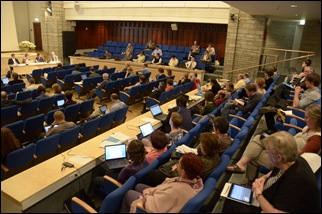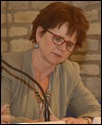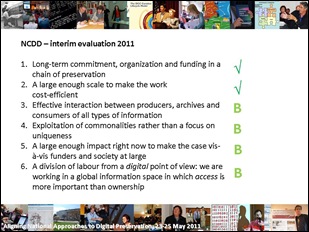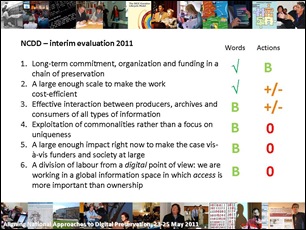 Something I thought a lot about in preparing for this conference is that presentations tend to be about how wonderful our organizations and projects are. The value of such information is limited in the sense that we often learn more from our mistakes and failures. That is why conferences have receptions and dinners – after a few glasses of wine it is often easier to get at least fragments of the real story. But that is is not an ideal route. Major headache risk, for one.
Something I thought a lot about in preparing for this conference is that presentations tend to be about how wonderful our organizations and projects are. The value of such information is limited in the sense that we often learn more from our mistakes and failures. That is why conferences have receptions and dinners – after a few glasses of wine it is often easier to get at least fragments of the real story. But that is is not an ideal route. Major headache risk, for one.
The three fundamental questions in this conference are: What are our accomplishments? What are the gaps? How can we move ahead? We cannot very well do that without honestly looking at ourselves. And share that information, so that we can all learn.
 So, I decided to take a risk. Rather than tell the story of my own organization (the Dutch Digital Preservation Coalition, or NCDD) in terms of the information that you can easily find on the website (http://www.ncdd.nl/en), I took the requirements for successfully organizing digital preservation with which I ended yesterday’s blogpost, and measured ourselves against those (by the looks of this photograph by Wouter Schallier, grading is serious business ;-). I then presented the results to the audience. Consider it a mid-term evaluation, for a national coalition that in 2008 formulated a very bold mission ‘to build an infrastructure for permanent access to all digital objects in the public domain – within five years’.
So, I decided to take a risk. Rather than tell the story of my own organization (the Dutch Digital Preservation Coalition, or NCDD) in terms of the information that you can easily find on the website (http://www.ncdd.nl/en), I took the requirements for successfully organizing digital preservation with which I ended yesterday’s blogpost, and measured ourselves against those (by the looks of this photograph by Wouter Schallier, grading is serious business ;-). I then presented the results to the audience. Consider it a mid-term evaluation, for a national coalition that in 2008 formulated a very bold mission ‘to build an infrastructure for permanent access to all digital objects in the public domain – within five years’.
I used simple report card gradings (V meaning ‘doing pretty good’; B meaning ‘we have made a beginning’; +/- meaning ‘got some, need more’; 0 meaning ‘presently a gap’). And came up with this – my own evaluation of things:
That does not look too bad, does it? We seem to be right on track. But after a night’s sleep I decided I was not happy with it. Somehow it did not tell the whole story. And then I discovered why not – this was all about words, about minutes of meetings, published documents, etc. This report card required a second column of ratings, actions. What have we, as a coalition (I am not talking about individual partners) really built that works, that exploits the commonalities, that saves actual money because of the scale, that divides the work according to a digital paradigm?
This report card shows how difficult it is to take the step from words to concrete actions. This report card shows that cooperation is hard and slow work. This is the report card that most projects do not show at conferences. Yet this is the report card that teaches us something, that tells us about the areas where we have to step up our game.
I was quite surprised by the positive feedback from the conference about the report card. So I would say: we are all in the same boat, so let’s set a tradition, align our weaknesses, and learn from them.


Geen opmerkingen:
Een reactie posten